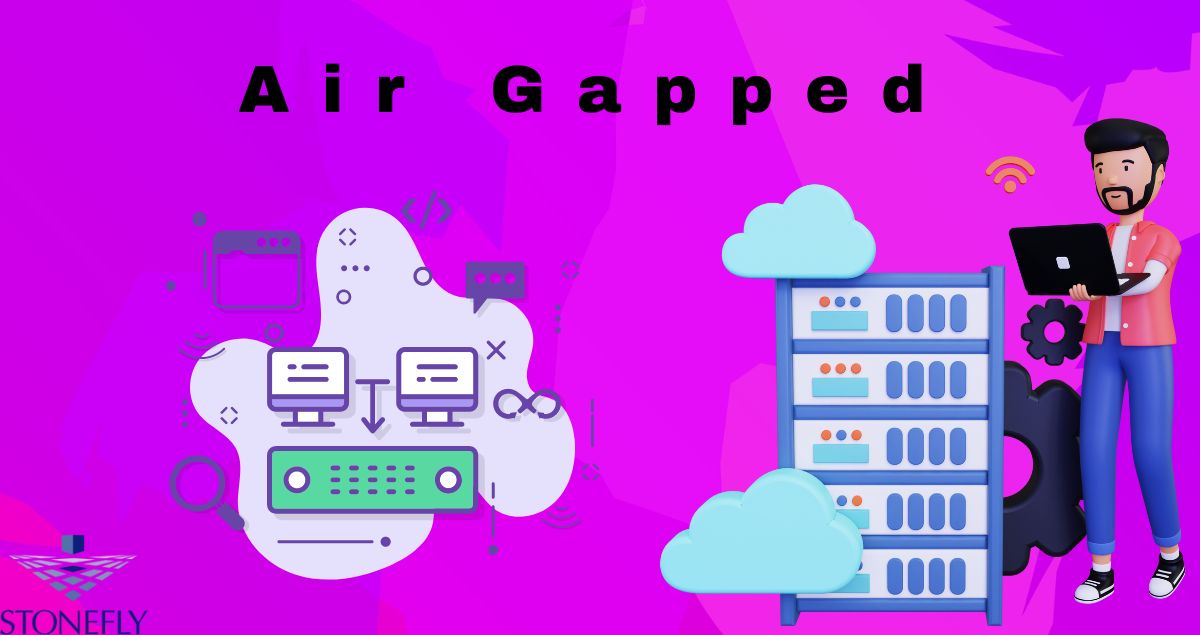The Importance of Air Gapped Systems for Optimal Cybersecurity
In today's digital age, cybersecurity has become a top priority for businesses and organizations. With the constant threat of cyber-attacks, it is crucial to have a reliable and secure system in place to protect sensitive data. One solution that has gained popularity is the use of Air Gapped System. In this document, we will explore the concept of air gapped systems, their benefits, and strategies for implementing them to ensure maximum security while minimizing costs.
Defining an Air Gapped System
An air gapped system is a computer network or device that is physically isolated from other networks and the internet. This means there is no connection between the air-gapped system and any external source, making it virtually impossible for hackers or malware to penetrate the network. This isolation creates a secure environment for storing and processing sensitive data.
Identifying Potential Security Risks
While air gapped systems provide a high level of security, they are not completely immune to threats. Here are five potential security risks to keep in mind when using an air gapped system:
Internal Threats -
Despite being isolated from external sources, internal personnel with access to the network can still pose a threat by intentionally or unintentionally introducing malware or malicious codes.
Physical Access -
If someone gains physical access to the air gapped system, they can potentially compromise its Security by installing unauthorized software or extracting sensitive data.
Removable Media -
Connecting external storage devices such as USBs and CDs to an air gapped system can introduce malware that could spread throughout the network.
Social Engineering Attacks -
Hackers can use social engineering tactics to trick employees with access to the air gapped system into providing sensitive information or installing malware.
Malware Transfer -
In some cases, malware can be transferred from other networks through common devices such as printers and scanners, compromising the security of an air gapped network.
Implementing Security Protocols to Secure the Network from External Threats
Physical Security -
To prevent physical access to an air gapped system, it is essential to have strict security measures in place such as locked server rooms and restricted access to authorized personnel only.
Software Restrictions -
Limiting the use of removable media and implementing strict software restrictions can prevent malware from being introduced into the network.
Regular Updates and Patches -
Keeping all software and operating systems up to date with the latest security patches can prevent vulnerabilities from being exploited by hackers.
Employee Training -
Educating employees about potential threats and how to identify them can help prevent social engineering attacks and other insider threats.
Network Segmentation -
Segmenting an air gapped network into smaller subnetworks with specific security measures in place can limit the spread of malware and protect sensitive data.
Benefits of Utilizing an Air Gapped System for Optimal Protection
There are several benefits to using air gapped systems, including:
High Level of Security -
With no external connection, air gapped systems provide an extra layer of security against cyber threats.
Compliance -
Many industries, such as government and healthcare, have strict compliance regulations that require the use of air gapped systems to protect sensitive data.
Data Protection -
Air gapped systems offer a secure environment for storing and processing sensitive data, reducing the risk of data breaches.
Strategies for Ensuring Maximum Security with Minimal Costs
While implementing an air gapped system may seem like a costly endeavor, there are ways to ensure maximum security while minimizing costs, including:
Virtual Air Gapping -
Virtual air gapping uses software to simulate the security of an air gapped system without physically isolating it. This can be a more cost-effective solution for those who cannot afford to completely disconnect their network from external sources.
Utilizing Cloud Services -
Storing data in the cloud can reduce the need for physical servers and storage devices, saving on equipment costs.
Risk Assessments -
Regular risk assessments can help identify potential security threats and allow for proactive measures to be taken to mitigate them.
Employee Training -
As mentioned earlier, employee training is a crucial aspect of securing an air gapped system. Investing in proper education for employees can prevent costly security breaches in the future.
Conclusion
In conclusion, air gapped systems offer a high level of security for protecting sensitive data and have become an essential component in today's cybersecurity landscape. Understanding potential risks, implementing necessary protocols, and utilizing cost-effective strategies can ensure maximum security while minimizing costs for businesses and organizations. Consider implementing an air gapped system to protect your network from cyber threats and safeguard your valuable data.
FAQs
What is the most significant benefit of using an air gapped system?
The most significant benefit of using an air gapped system is its high level of security, as it physically isolates the network from external sources, making it virtually impenetrable to cyber threats.
Are there any cost-effective solutions for implementing an air gapped system?
Yes, virtual air gapping and utilizing cloud services are cost-effective solutions for implementing an air gapped system. Regular risk assessments and employee training can also help minimize costs while ensuring maximum security.
Can an air gapped system still be compromised?
While highly secure, air gapped systems are not completely immune to threats. Internal personnel, physical access, removable media, social engineering attacks, and malware transfer can all compromise the security of an air gapped network.
Is there any legal requirement for using an air gapped system?
In some industries, such as government and healthcare, there are strict compliance regulations that require the use of air gapped systems to protect sensitive data.
How often should risk assessments be conducted for an air gapped system?
Risk assessments should be conducted regularly, at least once a year, to identify potential threats and ensure the security protocols in place are effective.


No comments yet